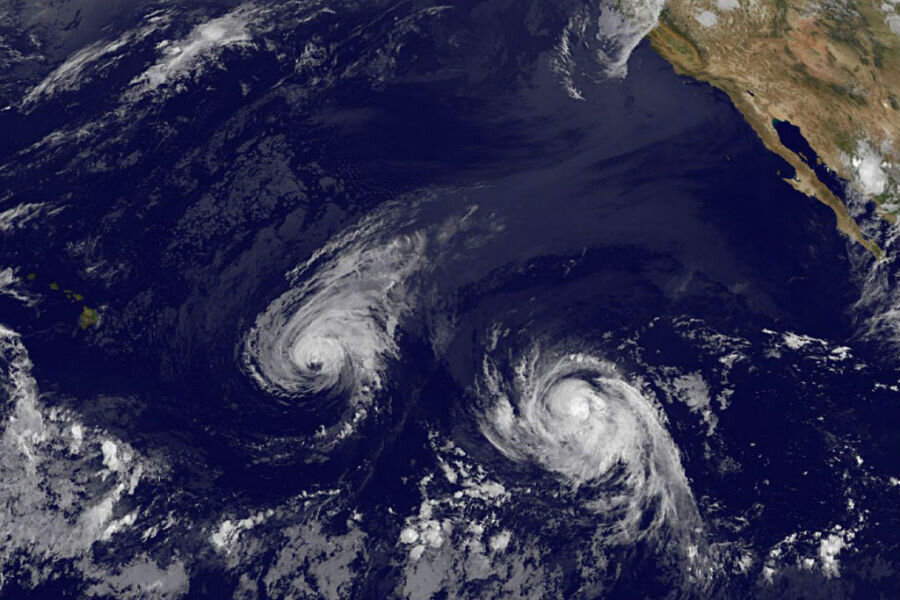Hawaii, which rarely gets hurricanes, now faces two back-to-back
Loading...
A rare convergence of two hurricanes heading for Hawaii has prompted school closures and sent residents scrambling to collect emergency supplies. Hurricane Iselle could hit the islands Thursday with Julio following two to three days later. Though both storms are now hurricanes, they are expected to weaken to tropical storms by the time they make landfall.
While the East Coast is no stranger to hurricanes, Hawaiians have not had to contend with a major hurricane in more than 20 years. The last hurricane to cause significant damage in the state was Iniki, which killed six people and caused $2.4 billion in damage on Kauai in 1992. Before that, the last recorded hurricane to hit the Hawaiian Islands was the 1871 Kohala cyclone.
The West Coast doesn't experience many hurricanes either. Tropical cyclones and hurricanes form in both the Atlantic and Pacific Oceans. So, why do hurricanes seem to be an East Coast phenomenon in the United States?
For one thing, hurricanes that form in tropical and subtropical latitudes tend to follow a west-northwest path. That means that storms that form in the Atlantic tend to travel toward the Eastern seaboard. Those that form in the Pacific, however, most frequently travel away from the West Coast.
On the rare occasion that Pacific hurricanes do track back toward the West Coast, they tend to peter out before they touch land, due to relatively cool water temperatures. The Atlantic is typically much warmer than the Pacific. Warm waters the Gulf Stream make the Atlantic much more conducive to sustaining hurricanes. Along the East Coast, ocean waters can top 80 degrees Fahrenheit. On the West Coast, however, water temperatures rarely get much higher than lower 70s, even in the middle of summer.
Of course, neither of these trends are absolute rules. On the East Coast, hurricanes can change trajectory at the last minute, sparing coastal residents. On the West Coast, El Niño events can trigger unusually warm air and water temperatures. Climatologists suspect that an El Niño may have been at play in 1858, when the only recorded hurricane ever to hit California battered the coast of San Diego.
While full-blown hurricanes on Hawaii are rare, the islands’ mountainous terrain can accelerate winds and promote torrential rains and flash flooding. The convergence of two major storm systems could bring flooding far beyond what residents are accustomed to. Authorities are recommending that residents prepare a seven-day emergency kit, because the islands’ remote location could hamper relief efforts.






